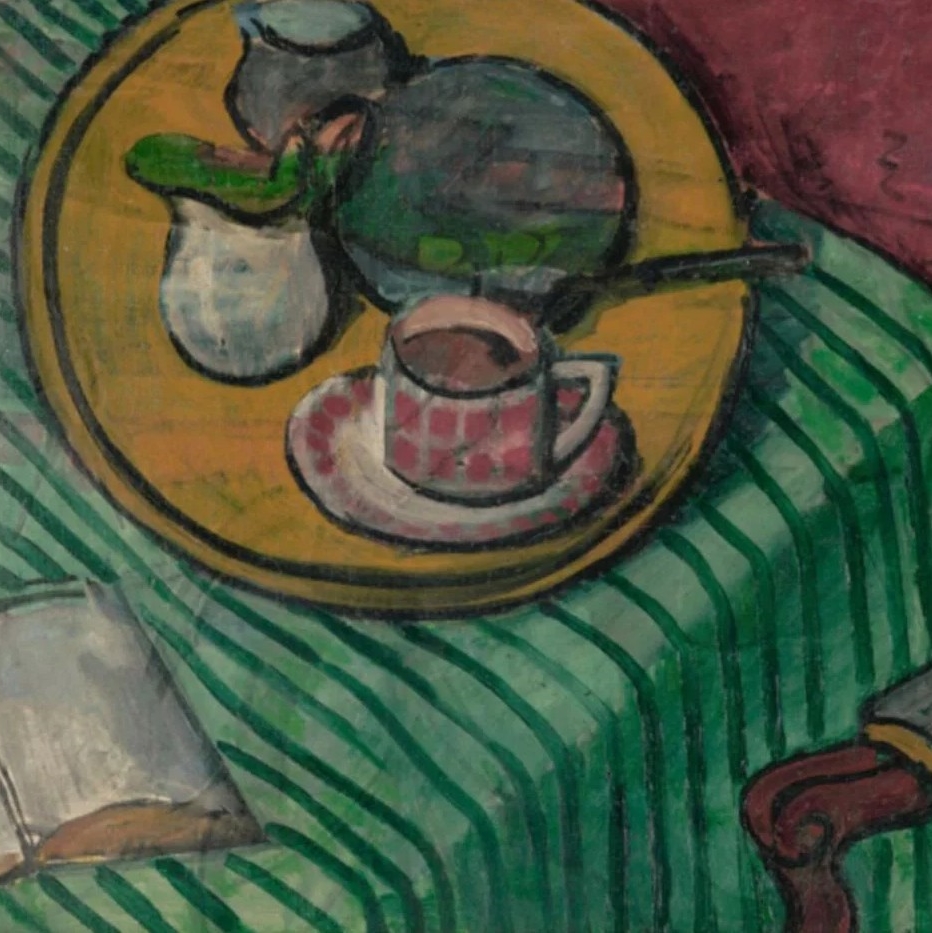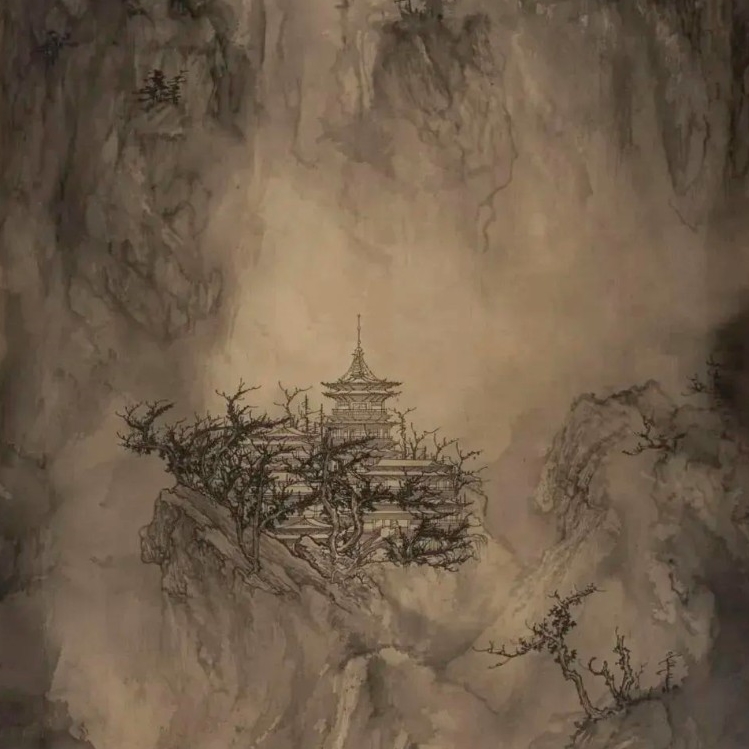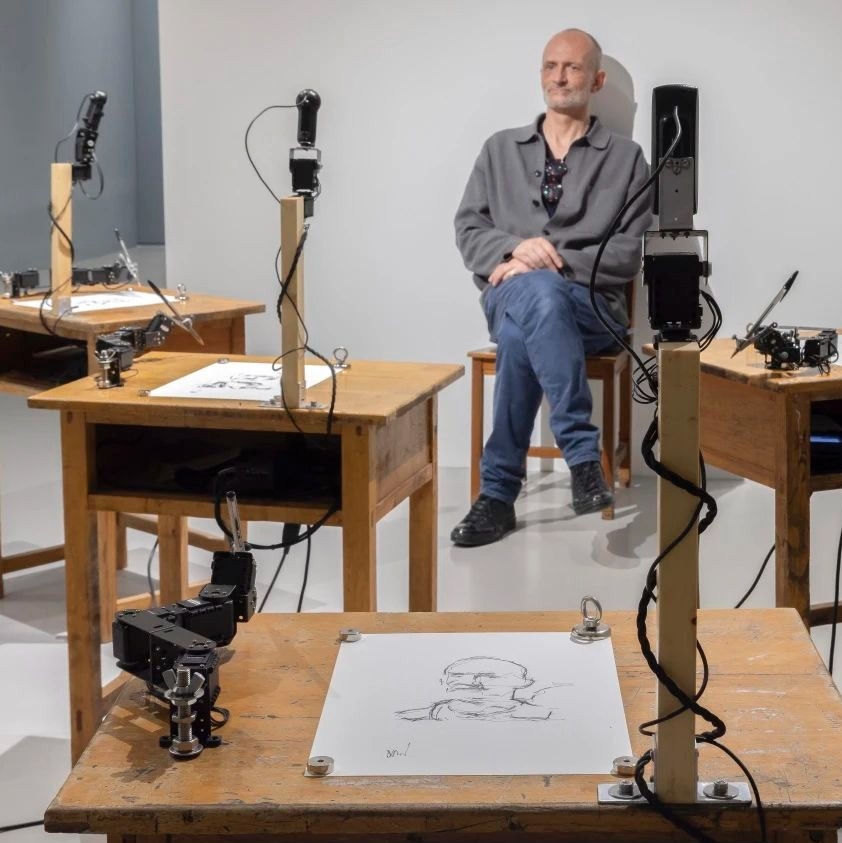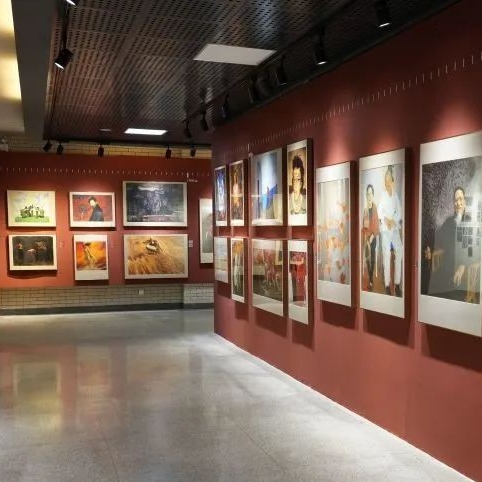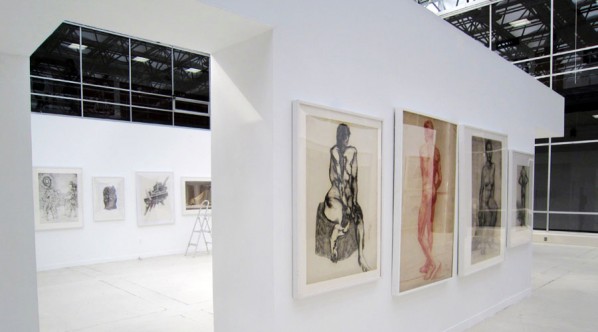
Exhibiting Scene of Chinese Drawings from the Central Academy of Fine Arts PHOTO: CAFAM
Nearly 100 contemporary drawings from the collection of China’s Central Academy of Fine Arts, the only art academy of higher learning governed by the country’s Ministry of Education, will be on view in an exhibition from October 24 through December 2, 2011 in the University Galleries located in Ben Shahn Hall on campus. The exhibition marks the first time that these drawings, created over a span of six decades from 1950 to 2009, have been shown in the United States. They also provide an opportunity to view the evolution of Chinese drawing at what is considered one of China’s most important institutions for art education.
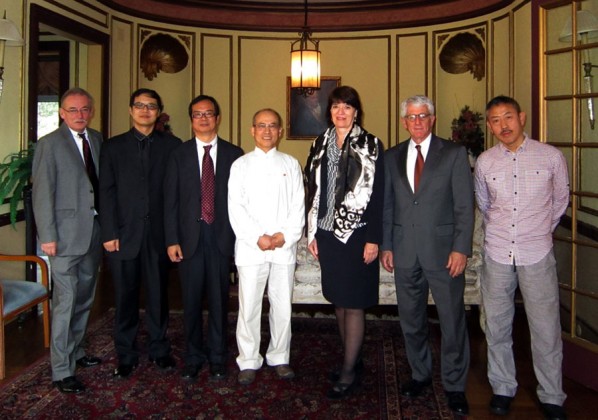
Opening Ceremony of Chinese Drawings from the Central Academy of Fine Arts PHOTO: CAFAM
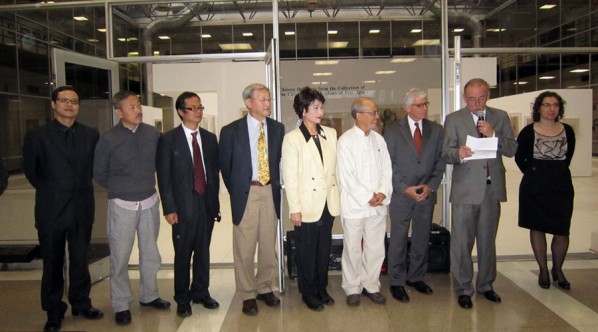
Opening Ceremony of Chinese Drawings from the Central Academy of Fine Arts 02 PHOTO: CAFAM
The exhibition features figurative drawings, mostly portraits drawn from life, by 77 Chinese masters and their students, in a variety of media including charcoal, pencil, graphite, pastel and ink, mostly on paper. The exhibition also includes a number of sketch studies by Chinese masters such as Gao Chao, Wang Shikuo, and Chao Ge, that provide an opportunity to view the artistic process from idea to final work. Among those featured in the exhibit is Xu Bing, who curated the exhibition. The recipient of a 1999 MacArthur Foundation genius grant, he has exhibited his works throughout the world, and is currently the vice president of the Central Academy of Fine Arts. Other featured artists include Chen Dan Qing, Wu Zuoren, Zhan Jianjun, Zhu Naizheng, Sun Jingbo, and Zhou Sicong.
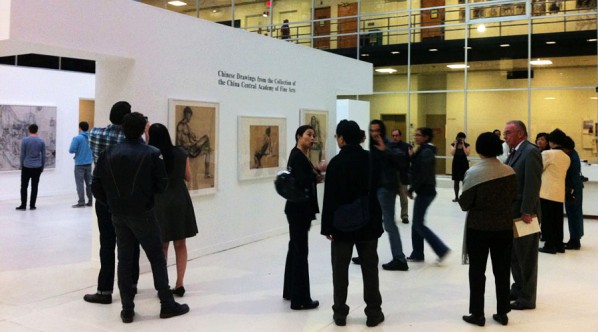
Guests visited the Chinese Drawings from the Central Academy of Fine Arts PHOTO: CAFAM
As stated by Xu Bing, the exhibition consists of two parts:
Part I summarizes 60 years of education in drawing at the CAFA. It reviews the transitions from the era of Xu Beihong to the introduction of the Soviet Union style, and the different stages following China's opening to the West. It shows the true facets of the development of drawing at the CAFA and the blind spots of each stage.
Each of these stages had its distinct philosophy which left various impacts on the practice and teaching of drawing. As an overview of this topic, we present some of the participants on their artworks and scenarios of teaching and learning, in a merging of theory and practice. Through the chemistry of teaching and learning, we see that the training in drawing at the CAFA goes far beyond the study of craft—the deeper value lies in the teachers' quality of character as well as their attitudes toward and work practice in academia and art.
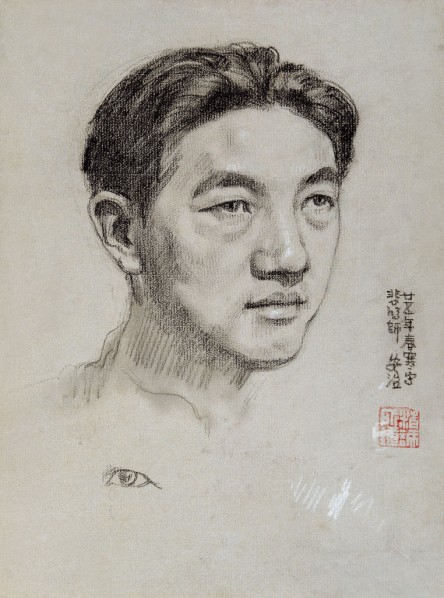
Portrait of Xu Beihong by Zhang Anzhi, 1936; drawing, 100cm×74cm
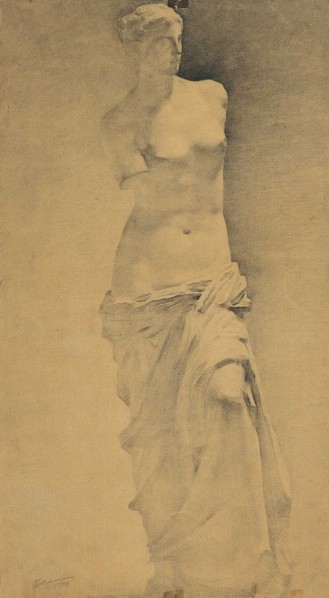
Plaster Model of Venus by Zhu Naizheng, 1955; drawing, 73.5cm×40cm
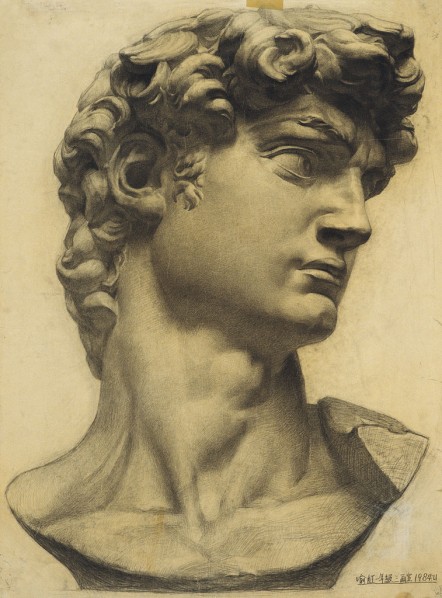
David by Yu Hong, 1984; drawing, 100cm×74cm
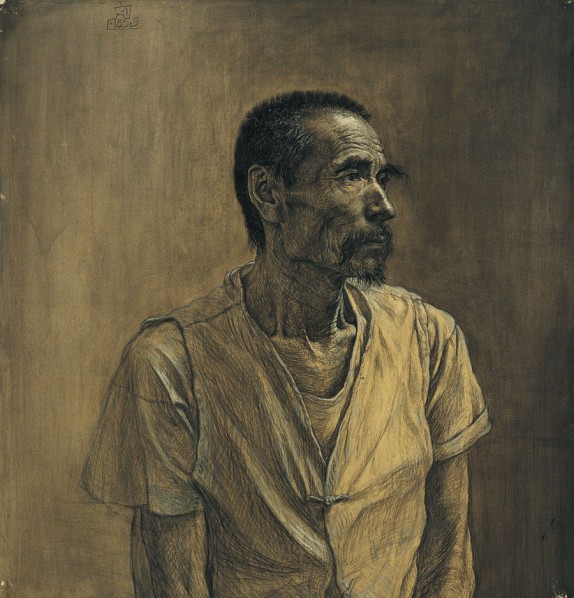
Portrait of An Old Man by Liu Xiaodong, 1985; drawing, 73cm×69cm
Part II studies the relationship between “drawing and creative thinking.” It sheds light on the contexts of some of the drawing creations at the CAFA over the past 60 years and their underlining mindsets. How did these artists conceive and execute their visual language in their works, which stirred widespread societal repercussions in their times? Each process was the birth of a unique visual language and graphics—the relationship between an art form and the artist's life and time. Art is tied to the era it is born in; between the essence of art and external constraints of an "artspace," artists find new ways to promote art within their limited boundaries. This also touches on the interaction between the foundation of drawing and the expression of individual temperament, since the two are a unified subject.
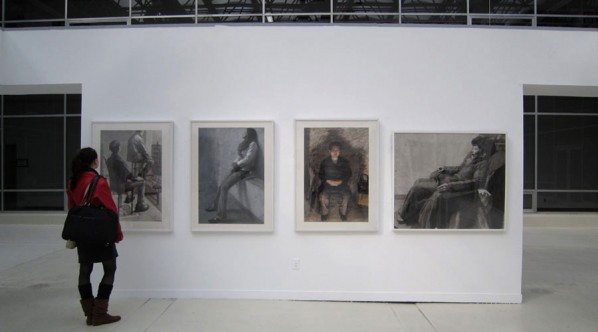
A visitor viewed and admired the works at the Chinese Drawings from the Central Academy of Fine Arts. Photo: CAFAM
"Drawing is the foundation of an art education in China,” says Zhiyuan Cong, William Paterson University professor of art and director of the University’s Center for Chinese Art, which organized the exhibition in conjunction with the China Central Academy of Fine Arts. “Throughout the six decades from 1950, China has continued to maintain its artistic traditions while learning from artists in Europe, Russia, and the United States. This collection provides an excellent opportunity to view the evolution of Chinese drawing through the works of many of the country’s great masters.”
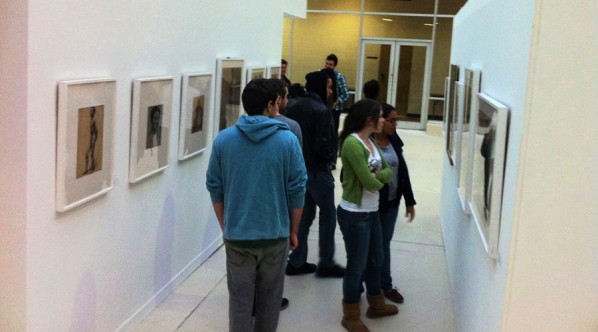
Chinese Drawings from the Central Academy of Fine Arts attracts many local visitors. Photo: CAFAM
According to the report of William Paterson University Galleries, a number of events will be held in conjunction with the exhibition, beginning with an opening symposium, “The importance of Drawing in Foundation and Contemporary Art,” on Monday, October 24, from 2:30 to 4:30 p.m. in Ben Shahn Hall 146. Panelists from the Central Academy of Fine Arts include Professor Sun Jiagbo, vice president of the academic board; Professor Zhou Zhiyu, chair of the Department of Foundation, Institute of Design; and Associate Professor Wang Yuping, Painting Department; Also participating will be William Paterson University faculty Professor Alejandro Anreus, chair of the Art Department; Professor Zhiyuan Cong, head of the printmaking program; Professor Ming Fay, head of the sculpture program, and Professor Charles Magistro, head of the painting program.
Reports related to this:
1. newsrelease from William Paterson University Galleries
Image Courtesy of CAFAM and All Rights Reserved.


